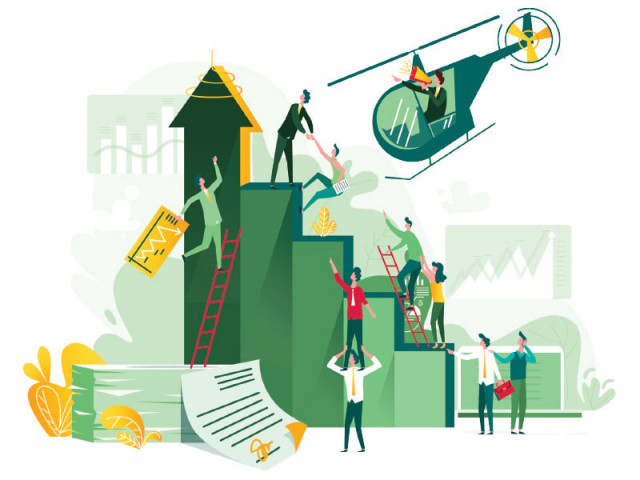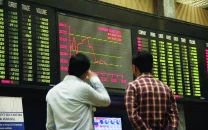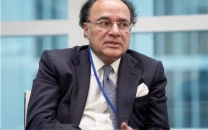From $3b in 1947 to $375b in 2024
Experts say despite reforms and IMF support, political stability and structural changes are key

Pakistan's economy has expanded significantly since its independence 77 years ago in 1947, rising from just $3 billion in its first year to $375 billion by the fiscal year ending June 30, 2024. However, the country remains in the developing phase, hampered by economic deterioration and disruptions that began in the early 1990s.
While Pakistan celebrated its 78th Independence Day on Wednesday, it still faces serious challenges, particularly in managing mounting debt and an energy crisis. Despite these obstacles, the nation's future remains promising, with structural reforms being introduced under a new $7 billion International Monetary Fund (IMF) loan programme set to begin in the coming weeks. The Planning Commission (PC) has projected that Pakistan could be among the top 10 global economies, potentially worth $3 trillion by 2047, when it will mark a century of independence.
The domestic economy has diversified significantly since its early days, when agriculture dominated, contributing around 60% of GDP and providing 80% of employment. Initially, the textile industry, with raw cotton as the leading product, was the primary industrial sector. Today, the services sector plays a major role in economic growth.
A study by the Institute of Business Administration (IBA) titled "Pakistan's Growth Experience 1947-2007" highlighted that in the regional context, Pakistan grew faster than South Asia by an average of 2% through most of the 1960s and 1970s, maintaining similar growth rates during the 1980s. However, since 1993, Pakistan's growth has fallen below the regional average. In the first 20 years after independence, Pakistan had the highest growth rate in South Asia. According to a 2002 World Bank report, Pakistan exported more manufactured goods than Indonesia, Malaysia, the Philippines, Thailand, and Turkey combined in 1965. However, by the 1990s, Pakistan had become the slowest-growing country in South Asia, a stark reversal of its earlier achievements. Poverty, which had declined from 46% in the mid-1960s to 18% in the late 1980s, rose to 34% by the late 1990s.
The economy grew at an average annual rate of over 5% in the first six decades, but this slowed to an average of 4.4% in the 1990s. "Political instability, frequent changes in government, weak governance, poor macroeconomic management, and an unfavourable external environment were more dominant than the favourable impact of the economic policies of deregulation, liberalisation, and privatisation introduced in 1991. These reforms and policies were pursued haltingly and sporadically," the study noted. The current IMF programme is seen as crucial. However, the government needs to implement policies that significantly grow exports and create import substitutions over the course of the bailout package to ensure it becomes the last such programme, enabling the nation to stand on its own feet.
Economist Shahid Hasan Siddiqui highlighted that the economy was worth just $3 billion in 1947, while banking deposits have surged to Rs28 trillion by the end of 2023, up from just Rs1 billion at the time of independence, indicating extraordinary growth. However, he pointed out that banks have financed Rs25 trillion of the total deposits to the government, compared to significantly lower financing to the private sector, suggesting a serious distortion in the economy.
The rupee-dollar parity, which stood at Rs3.30/$ at the time of partition, has now devalued to Rs278/$, presenting a significant challenge, Siddiqui noted. Additionally, domestic savings have fallen to significantly low levels compared to the past, while per capita income has dropped below that of India and Bangladesh, a reversal from its previously higher position before 9/11. In a comprehensive commentary titled "Market Strategy: Independence Day – A Brighter Future on the Way," Arif Habib Limited noted that Pakistan's economy has shown remarkable resilience, bouncing back from a contraction in FY23 to achieve a 2.38% growth in FY24. Projections for FY25 suggest further improvement, with growth expected in the range of 2.5-3.5%.
The 2024 general elections, despite challenges, have steered the nation toward political stability. By early 2023, Pakistan faced severe economic challenges, exacerbated by rising international commodity and fuel prices, leading to soaring inflation. This turmoil was compounded by substantial debt repayment obligations and underwhelming economic performance, culminating in a severe balance-of-payments crisis that drained Pakistan's foreign currency reserves.
Amid this backdrop, the PML-N coalition government made important strides, including securing a $7 billion Extended Fund Facility in a 37-month programme with the IMF. This agreement was pivotal in helping Pakistan avert an imminent crisis. While major reforms were initiated during the caretaker setup (2023-24), the expectation is that the current government will continue these reforms and introduce new measures to transition the economy from mere stability to robust growth. "Despite these improvements, Pakistan is not entirely out of the woods. Political stability remains crucial to prevent the resurgence of long-term economic and political pressures."
Moving forward, several key priorities must be addressed, including effective fiscal management, tackling inflation, reforming the energy sector, maintaining transparency in economic policies, and fostering public trust. The real challenge lies in translating political stability into tangible economic growth.
The resurgence in industrial activity and the robust performance of the services sector are set to drive GDP growth in the current fiscal year (FY25). Large-scale manufacturing (LSM) is slowly recovering, with the LSM Index posting a 1% increase in the first 11 months of FY24, an improvement from the previous year's contraction of -9.9%. Further interest rate cuts and stable rupee-dollar parity are anticipated to boost LSMI production. Meanwhile, the services sector is poised for growth, particularly in finance and insurance, supported by accommodative policies from the central bank.



















COMMENTS
Comments are moderated and generally will be posted if they are on-topic and not abusive.
For more information, please see our Comments FAQ